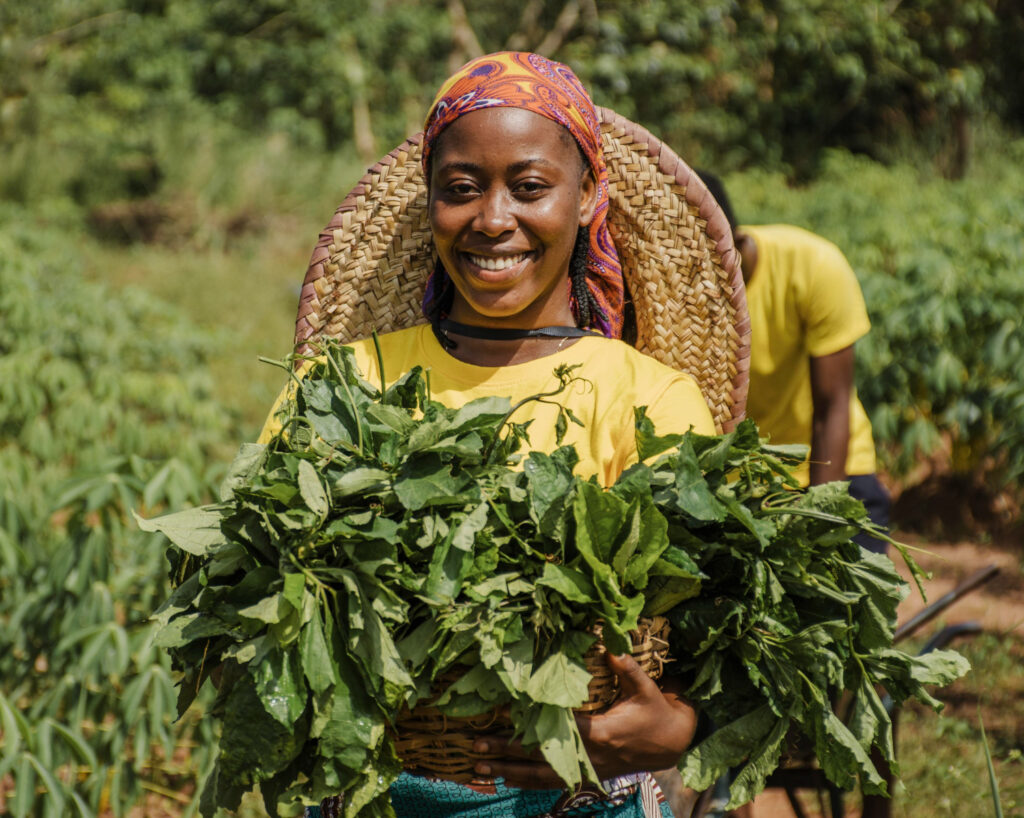
Artificial intelligence (AI) is increasingly shaping agriculture across Africa, addressing critical challenges such as food security, climate change, and resource constraints. As of 12:59 AM WAT on Thursday, June 12, 2025, recent news and trends highlight a transformative impact, particularly for smallholder farmers who produce 70% of the continent’s food. This survey note provides a comprehensive overview, drawing from authoritative sources and real-world examples, to inform your AI reports blog audience.
Recent Developments in AI Applications
AI is revolutionizing precision farming, enabling farmers to optimize resource use and boost productivity. A recent article from KnowESG (June 10, 2025) details specific AI tools transforming African agriculture:
- Farmer.chat in Nigeria, particularly in southern regions, diagnoses poultry diseases like Newcastle disease, reducing mortality rates. For instance, farmer Edemanwan Eyo Bassey benefited from lower chicken losses, with the tool available in local dialects like Hausa and used by over 50,000 African farmers.
- PlantVillage, operating Africa-wide, predicts pests such as locusts and detects diseases like cassava mosaic, supporting about 15 million farmers per season. However, it faced funding challenges following a $39 million USAID cut, as noted in the article.
- PlantVillage’s Nuru chatbot and Farmerline’s Darli AI in Ghana offer additional services, diagnosing problems, providing market insights, financial planning, and promoting regenerative practices. These tools aim to demystify farming and empower farmers for global market standards.
These innovations are crucial in regions with limited extension services. For example, in Nigeria’s Benue State, the agent-to-farmer ratio is 1 to 23,000, making AI a vital bridge for knowledge dissemination.
Financing Innovations Driven by AI
Access to finance remains a significant barrier for small-scale farmers, but AI is changing this landscape. An article from African Farming (June 10, 2025) highlights how AI unlocks new financing opportunities, particularly for emerging farmers in South Africa:
- AI feeds financial institutions with alternative data, such as input purchasing patterns, field performance, and yield predictions, enabling better credit decisions for farmers lacking traditional collateral.
- A partnership between Khula! and ABSA implemented this model, allowing a female farmer to scale her operations from 200 hectares to 500 hectares using AI-driven credit assessments, which would have been impossible under traditional banking criteria.
- This data-driven approach reduces risk for lenders and improves outcomes for farmers, opening doors to funding and potentially transforming agricultural economies.
However, the evidence leans toward needing broader adoption to ensure scalability, especially in rural areas with limited digital infrastructure.
Digital Solutions Enhancing Livelihoods
A detailed report from the Brookings Institution (May 20, 2025) underscores how digital solutions, including AI, are driving meaningful livelihood improvements for African smallholder farmers. Key findings include:
- Increased Yields and Reduced Crop Loss: AI-powered crop disease detection systems, such as IITA’s Cassava Disease Surveillance platform, Cassava Seed Tracker, and Plant Village Nuru AI app, enable early identification and treatment, resulting in higher yields and minimized losses.
- Yield Increases from Digital Agronomy Tools: Tools like RiceAdvice and NextGen Agroadvisory provide location-specific recommendations, achieving 25% yield increases for wheat and rice in countries like Ethiopia, Nigeria, and Mali.
- Enhanced Market Access and Profit Margins: Digital platforms and blockchain systems enable transparent supply chains, reducing middlemen influence, lowering input costs, and improving profit margins. The Technologies for African Agricultural Transformation (TAAT) e-catalogue is a notable example.
- Climate-Smart Seed Distribution: TAAT delivered climate-smart seeds to 12 million farmers in 27 countries over three years using digital tools, enhancing resilience to climate variability.
- Improved Productivity and Resource Efficiency: AI in precision agriculture, such as Ujuzi Kilimo (sensors and farm data analytics) and Project FARM (big data and machine learning), optimizes input use for soil monitoring, automated irrigation, and pest/disease/weed prediction, boosting profitability.
- Enhanced Access to Farm Machinery: Hello Tractor uses AI to connect tractor owners with farmers, boosting productivity and reducing labor costs.
- Regional Soil Health Improvement: Digital soil mapping and Fourth Industrial Revolution (4IR) technologies improve soil fertility and promote sustainable land management, particularly in West Africa and the Sahel, through regional hubs for fertilizer and soil health.
- Support for Digital Literacy and Equity: CGIAR’s Digital Transformation Accelerator Program and GIZ Digital Transition Center program promote data governance, digital literacy, and equitable technology access, ensuring inclusivity.
- Job Creation and Entrepreneurship: Equipping youth and women with digital skills fosters entrepreneurship and creates new job opportunities, benefiting rural economies through youth-led initiatives for market linkages and loans.
These findings, as outlined in the Foresight Africa 2025-2030 report, highlight AI’s role in addressing food security and climate challenges.
Climate Resilience Through AI
With agriculture accounting for 25% of global greenhouse gas emissions, AI is pivotal for climate resilience. A January 2025 World Economic Forum article projects the regenerative agriculture market to grow from $1.7 billion in 2023 to $4.7 billion by 2028, driven by AI innovations. In Tanzania, AI-powered systems analyze satellite data to predict rainfall patterns, helping farmers adjust planting schedules and adopt drought-resistant crops. A 2025 study by the International Institute for Sustainable Development (IISD) noted a 30% increase in drought-resistant crop adoption in East Africa, safeguarding livelihoods amid a projected global population of 10 billion by 2058.
Challenges and Ethical Considerations
Despite the promise, challenges persist. A 2025 ITU report indicates only 30% of rural areas have reliable internet access, limiting AI adoption. Additionally, ethical concerns around data privacy and local ownership are emerging. An X post from
@jcokechukwu on June 3, 2025, raised questions about the Gates Foundation’s involvement, citing allegations of promoting GMOs and population control, highlighting controversy around external funding. The AI4AFS network addresses these concerns by incorporating ethical frameworks and participatory design to ensure local ownership and transparency.
Regional Success Stories and Policy Initiatives
Recent initiatives underscore AI’s potential. On June 4, 2025, Nigeria launched the Nigeria AI Scaling Hub in collaboration with the Gates Foundation, focusing on scaling AI solutions in agriculture, health, and education. This aligns with Nigeria’s 2025 National AI Strategy, emphasizing home-grown solutions for local challenges like climate variability and low yields. Early pilots are expected to engage over 100 farmers per project, building on the Gates Foundation’s $200 billion, 20-year pledge to enhance African agriculture, as announced in a June 2, 2025, speech in Addis Ababa.
In Kenya, Justine Ong’ala used PlantVillage’s app to identify a cassava virus, aiding over 300 fellow farmers without smartphones, demonstrating AI’s accessibility. In Senegal, a 2025 pilot by the Digital Agri Hub deployed AI to detect locust swarms, protecting 50,000 hectares of farmland, as reported by NEPAD.
Future Outlook and Market Growth
The African Development Bank reported a 40% rise in AI adoption in agriculture across the continent in 2024, signaling a growing trend. With investments like the Gates Foundation’s $7.5 million commitment to the Nigeria AI Scaling Hub and the expansion of programs like AI4AFS, Africa is poised for an agricultural revolution. By 2028, the AI agriculture market is projected to reach $4.7 billion, driven by innovations that enhance productivity, sustainability, and resilience, as per the World Economic Forum.
Summary Table: Key AI Tools and Impacts in African Agriculture
| AI Tool | Location | Specific Use Case | Impact/Notes |
|---|---|---|---|
| Farmer.chat | Nigeria (southern) | Diagnosing poultry diseases (e.g., Newcastle) | Reduced mortality, used by over 50,000 farmers, local dialects like Hausa |
| PlantVillage | Africa-wide | Predicting pests, detecting diseases (e.g., cassava mosaic) | Supports 15 million farmers, faced $39M funding cut |
| PlantVillage’s Nuru chatbot | – | Diagnoses problems, market insights, financial planning | Enhances decision-making for regenerative practices |
| Farmerline’s Darli AI | Ghana | Diagnoses problems, market insights, financial planning | Empowers farmers for global standards, demystifies farming |
| Ujuzi Kilimo | Kenya | Soil monitoring, farm data analytics | Optimizes resource use, improves profitability |
| Hello Tractor | Africa-wide | Connects tractor owners with farmers | Boosts productivity, reduces labor costs |
| RiceAdvice/NextGen Agroadvisory | Ethiopia, Nigeria, Mali | Location-specific recommendations | 25% yield increases for wheat and rice |
This table summarizes the diverse applications and impacts, highlighting AI’s role in enhancing agricultural outcomes.
Key Citations
- How AI is reshaping the fields of African farmers
- AI unlocks new financing opportunities for emerging farmers
- Smart Farming: How AI Tools Are Changing African Agriculture
- Digital solutions in agriculture drive meaningful livelihood improvements
- Is Artificial Intelligence the future of farming in Sub-Saharan Africa
- How AI is Revolutionizing Smallholder Farming in Africa February
- AI sparks a new agricultural revolution in the Global South
- AI for Agriculture Learning Pathway: A 12-Month Guide
- Powered Weeding Is Transforming Africa’s Agricultural Future
- AI At Work: Revolutionary Agriculture In Africa And Elsewhere
- Regenerative Agriculture Market Growth January
- Drought-Resistant Crop Adoption in Africa 2025
- AI Adoption in African Agriculture 2024 report
- Foresight Africa 2025-2030 report
- Gates Foundation pledge for African agriculture




